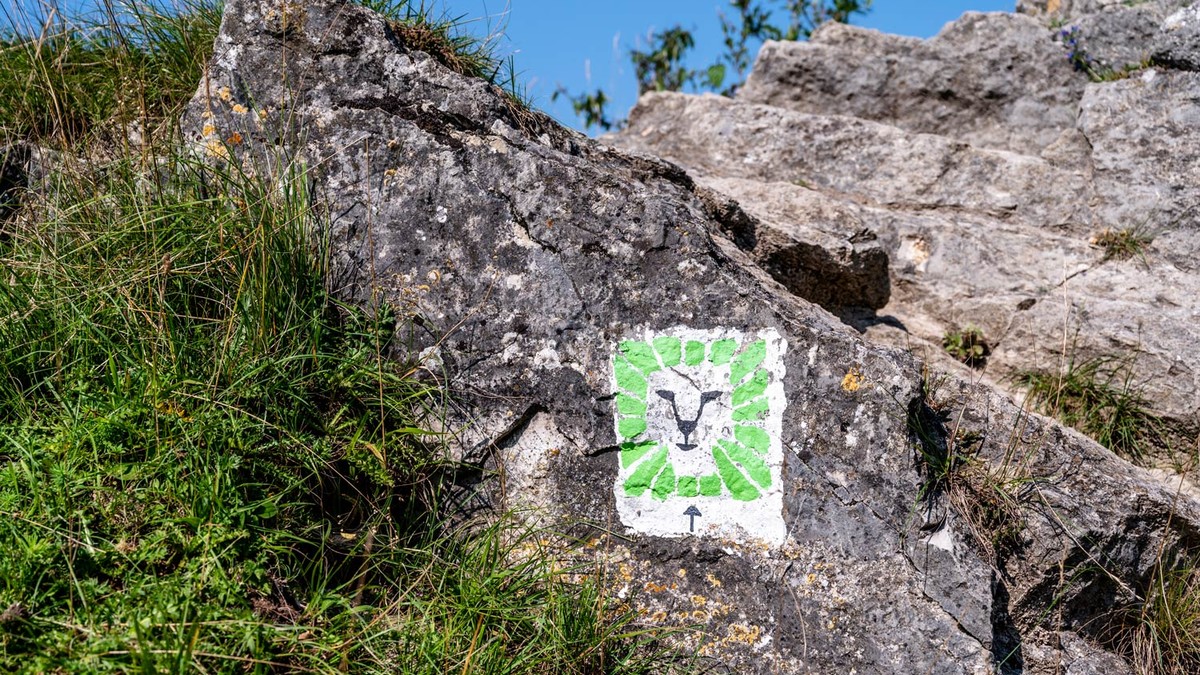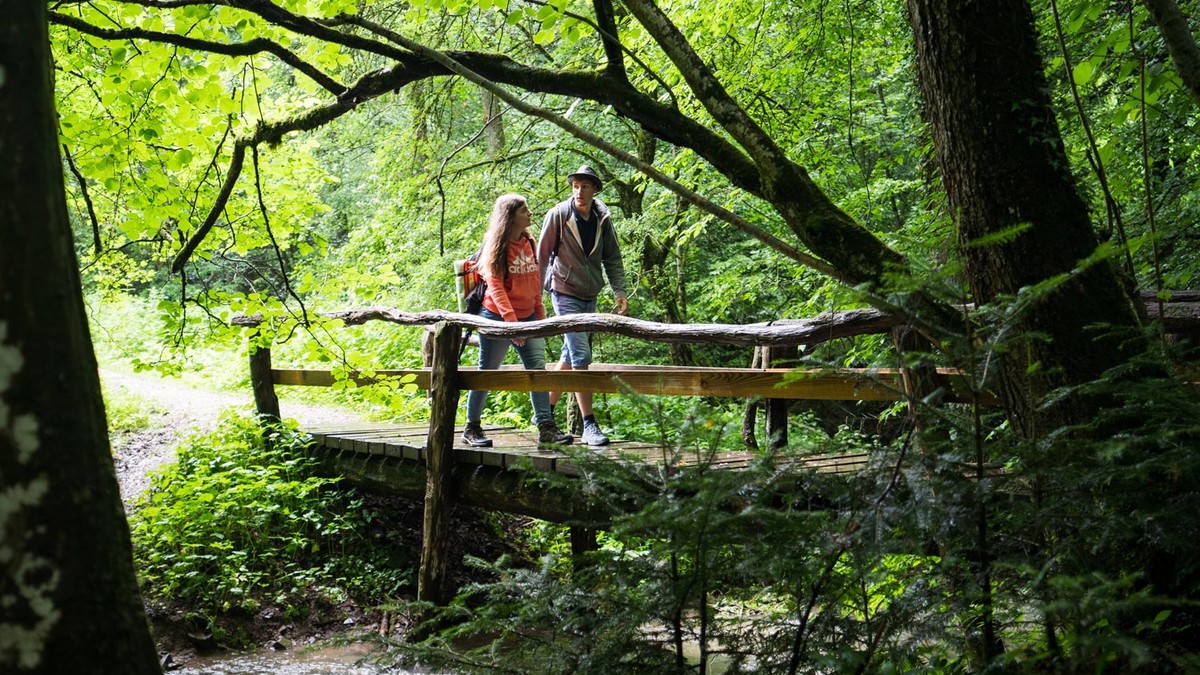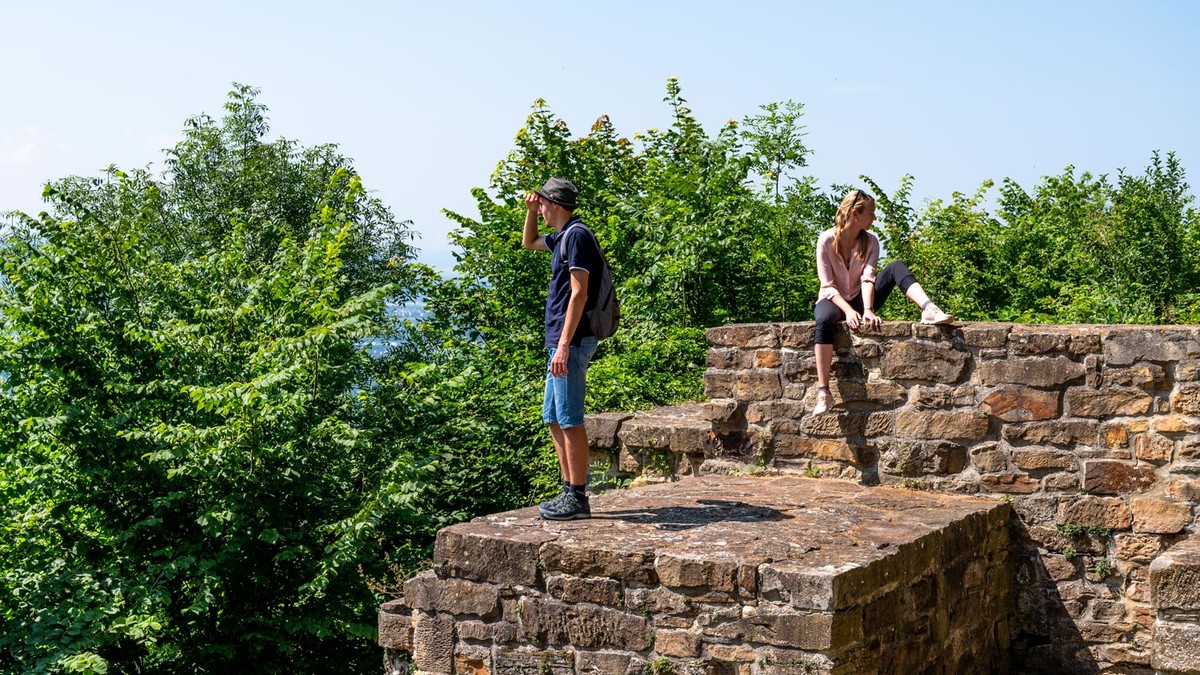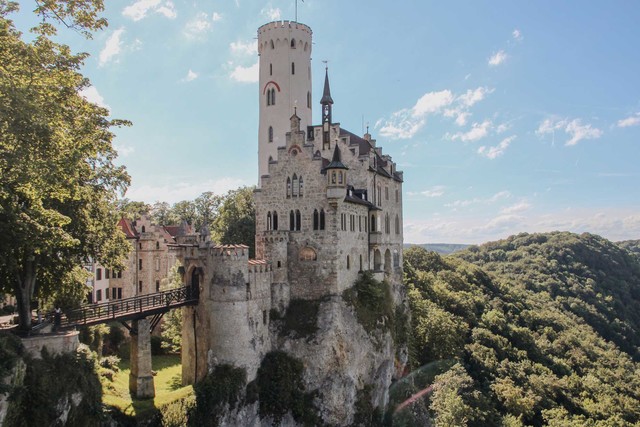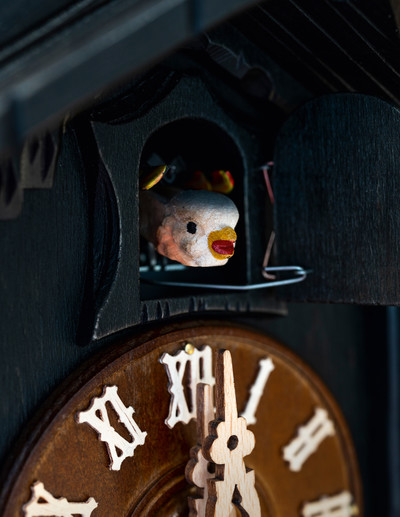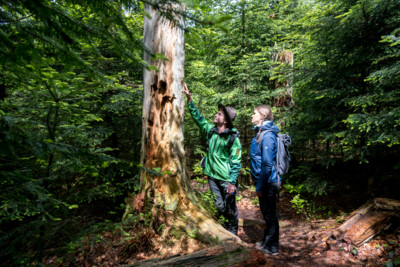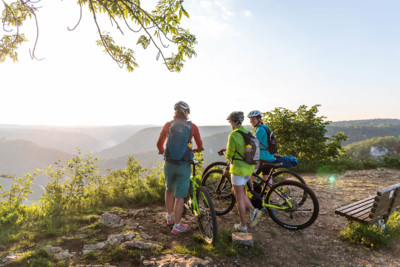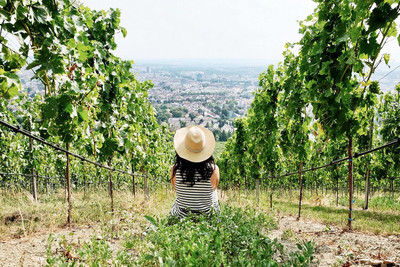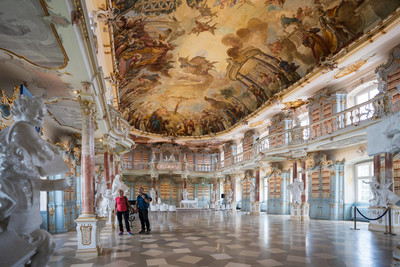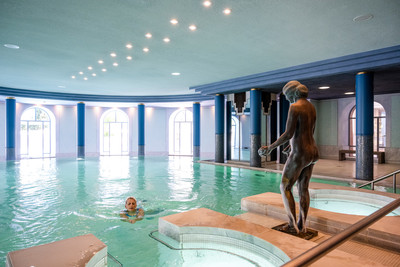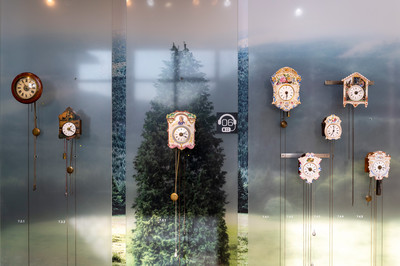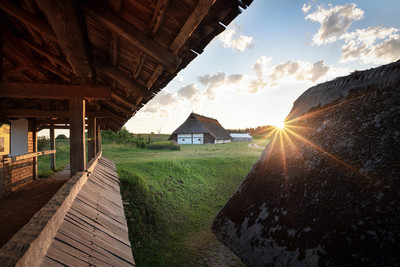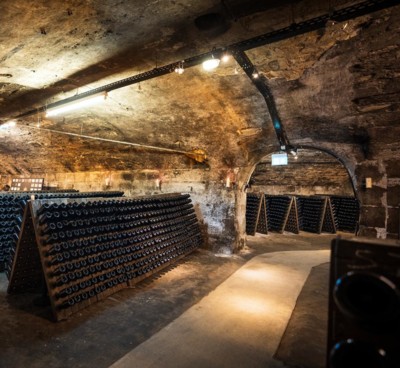The Emperor's New Roads
Hiking in the Footsteps of the Staufers in the Swabian Alb
© TMBW, Foto: Gregor Lengler


Great Landscapes and Fascinating History
Discovering the Staufer Trail near Göppingen
Welcome to the world of the Staufers, whose most important scion - Emperor Barbarossa - celebrated his 900th birthday in 2022. In short, the Staufers were the mighty Swabian noble family that quickly rose to the top of European power in the mid-12th century, producing several Holy Roman Emperors. Just as quickly, the family disappeared from the world stage 100 years later. Their origins lie in the Swabian Alb. The Staufer Trail, one of 16 certified Löwenpfade Trails, is a good 11 kilometres (almost 7 miles) long, so as well as enjoying the cultural landscape of the Swabian Alb, you will also be taking a small but exciting journey through time. So let's start at the beginning. Just follow the emblem of the Löwenpfade Trails, a stylised lion with a green mane on a white square.
The tour starts in Wäschenbeuren. If, before starting your hike, you would like to immerse yourself in the Staufer era, visit Wäscherschloss Castle and the local castle warden Krisztina Mutter, who loves to chat with visitors about the day-to-day culture in former times: which cereals were cultivated, what people ate and how they slept. The wall around the building, made of rusticated cut stones, is ten metres (almost 33 feet) high. The castle, which dates back to 1220, was part of the Hohenstaufen fortifications. From here, you could see the ancestral castle on the mountain, and spot any approaching aggressors.
Then, the Staufer Trail heads through the spectacular Beutental Valley and up to Hohenstaufen Mountain. It was once the seat of the Staufer family, but even the ruins are barely visible now. The view from Hohenstaufen Mountain extends far across the Swabian Alb and the district of Göppingen. Two other conical mountains rise like islands from the sun-drenched landscape: Rechberg Mountain and Stuifen Mountain. Together the three of them are known as the Drei Kaiserberge, the Three Emperor Mountains, of which the Hohenstaufen is the most famous. From its summit you have a magnificent view of the other two. When you're up there, your everyday concerns seem far away and you feel unassailable, maybe even lost in reverie. Perhaps this was one of the reasons why the Staufers chose this place as their seat.
Today, however, things are happening on the summit: a group of hikers is standing on a nearly three-metre-high marble Stauferstele - a memorial stone, many of which can be found in places with a connection to the Staufer dynasty. A couple say "I do" by the ruins of the Staufer Castle, and the scent of Swabian "Maultaschen" dumplings wafts from the "himmel & erde" inn.
We continue our hike down to the sunny Spielburg nature reserve. The name may suggest a defensive structure, but actually, it's a enormous rock formation. Millions of years ago it was part of the summit, but it was dislodged and slid down Hohenstaufen Mountain piece by piece until it came to halt. Today the rocks are home to a beautiful nature reserve. The meadows are dotted with purple sage and blue cornflowers. Gnarled trees provide shade and the air is buzzing with insects and shimmering in the heat. A level path leads up to the summit cross and ends at a rocky outcrop. From here you can scramble down steep paths along the landslide or sit on a bench with views over Göppingen.
If, after finishing the tour, you cannot get enough of the Staufer dynasty, visit the impressive Lorch Monastery (20 minutes north of Göppingen by car), which the Staufers also built and where important members of the family are buried, you can relive their adventures. For example, there is a huge modern circular painting by the artist Hans Kloss, who died only a few years ago.

 More Information on the Tour
More Information on the Tour




